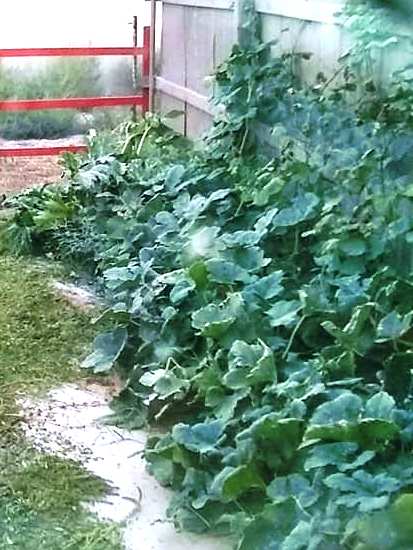Welcome / About / Stella / Q&A / Shop / Inspiration/ Follow
sustainable gardening Q & A

Find answers to sustainable gardening questions for homesteaders ~ perfect for growing food while nurturing the planet! Learn to start a garden, compost effectively, manage pests naturally, and attract pollinators ~ even in desert or urban spaces. Ideal for beginners maximizing small plots.
What are the basics of sustainable gardening?
When I started sustainable gardening, I focused on a few key principles to ensure my garden thrived while staying kind to the environment.
- First, I chose a garden spot that received 6–8 hours of sunlight daily and had good drainage.
- I used my taste buds to test my soil’s pH ~ pretty old-school! These days, most people use a kit from their local garden center for more precision.
- As a beginner, I stuck to easy crops like zucchini, tomatoes, and herbs like basil because they’re forgiving and produce well.
- I avoided synthetic pesticides, opting instead for organic methods like companion planting ~ marigolds are great for deterring pests ~ or using compost and aged manure as fertilizers.
- I also rotated my crops each year, like following tomatoes with green beans, to keep my soil healthy and reduce pests.
- Finally, I saved seeds from heirloom varieties and stored them in a cool, dry place to cut costs and preserve genetic diversity
How do I improve my soil sustainably?
When I want to boost my garden’s soil, I turn to natural solutions ~ compost, aged manure, or cover crops ~ to enrich it without chemicals. I mulch with straw or wood chips to lock in moisture and keep weeds at bay. To protect my soil’s structure, I avoid tilling. This helps preserve the microorganisms that make my garden thrive. These methods keep my soil fertile and ready for planting year after year.
How do I deal with pests naturally?
When pests invade, I fight back without chemicals ~ introducing ladybugs or spraying neem oil work wonders. I hand-pick bigger pests like caterpillars when I spot them. I also plant berries and seed-bearing plants to attract birds ~ they love munching on garden pests. When I lived in the Northeast, row covers were my go-to for protecting crops ~ they were simple and effective. More than fifteen years in the desert, and I have yet to find a way to keep them in place in 50+ mph wind gusts. These methods, tailored to where I garden, keep my plants safe naturally and my harvests thriving.
Why do I choose sustainable gardening over conventional methods?
I choose sustainable gardening because it matches my passion for growing food while caring for the planet ~ it’s a win-win! Unlike conventional methods that lean on synthetic fertilizers and pesticides, sustainable gardening builds healthier soil and supports local ecosystems. In my desert gardens, I water only twice a week, even in 100+ degree heat ~ saving time, energy, water, and money! Composting, seed-saving, and rainwater collection further cut costs ~ creating gardens that give back to the earth. By gardening this way, I’m growing healthy crops and nurturing a thriving, eco-friendly desert homestead.
How can I start composting at home?
When I started composting, I set up a simple three-bin system in my backyard for kitchen scraps, such as vegetable peels, coffee grounds, and eggshells, and mixed it in with yard waste like leaves or grass clippings. I balanced “green” and “brown” materials ~ roughly 1:3 ~ and turned the pile every few weeks to keep it aerated. In a few months, I had rich, dark compost to feed my garden naturally ~ it was easy, reduced waste, and saved money on fertilizers.
What is a three-bin composting system?
A three-bin composting system consists of 3 connected, but separate bins. In New England, I used 7 pallets: 3 for the back, 1 for each end, and 2 for dividers. Pallets are ideal ~ often free and quick to assemble! They’re sized perfectly for heat-generating piles (3 x 3 x 3 ft.), boosting decomposition.
When I first moved to the desert, I lived in an apartment and collected kitchen scraps in under-the-sink compost bin. When it was full, I transferred it to a large Rubbermaid tote that had dozens of holes drilled into the top and on all four sides.
Moving out of the apartment and onto my own land has enabled me to create a three-bin system, alternative ~ moisture and ventilation matter more in the desert. For the past 5 or so years, I have been using 4 x 4 x 2 ft. bins made out of pressure-treated posts and chicken wire. I avoid food scraps to prevent pests, composting them in a Dual Body Tumbling Composter instead.
check out my other Q & a pages!
The FOLLOWING sections are under construction
Animal Care: Tips for raising poultry, gamebirds, rabbits, and more.Sustainability & Resource Management: Composting, rainwater harvesting, etc.
More Q & A coming soon!
Homesteading Skills & DIYFood Preservation & StorageSeasonal Homesteading & PlanningHomesteading with Kids & FamilyUrban & Suburban HomesteadingHealth & Wellness in HomesteadingHomesteading Economics & Bartering


